
TimeTagger is a web-based time-tracking solution that can run locally on your NAS. It’s aimed at individuals and freelancers, and has the following features: Intuitive UI based around an interactive timeline. Lightweight feel by use of tags rather than projects. Reporting in PDF and CSV. Set daily/weekly/monthly targets. Integrated Pomodoro method (experimental). It’s responsive – it works well on small and large screens. Syncs between devices. In this step by step guide I will show you how to install TimeTagger on your Synology NAS using Docker & Portainer.
STEP 1
Please Support My work by Making a Donation.
STEP 2
Install Portainer using my step by step guide. If you already have Portainer installed on your Synology NAS, skip this STEP. Attention: Make sure you have installed the latest Portainer version.
STEP 3
Go to File Station and open the docker folder. Inside the docker folder, create one new folder and name it timetagger. Follow the instructions in the image below.
Note: Be careful to enter only lowercase, not uppercase letters.
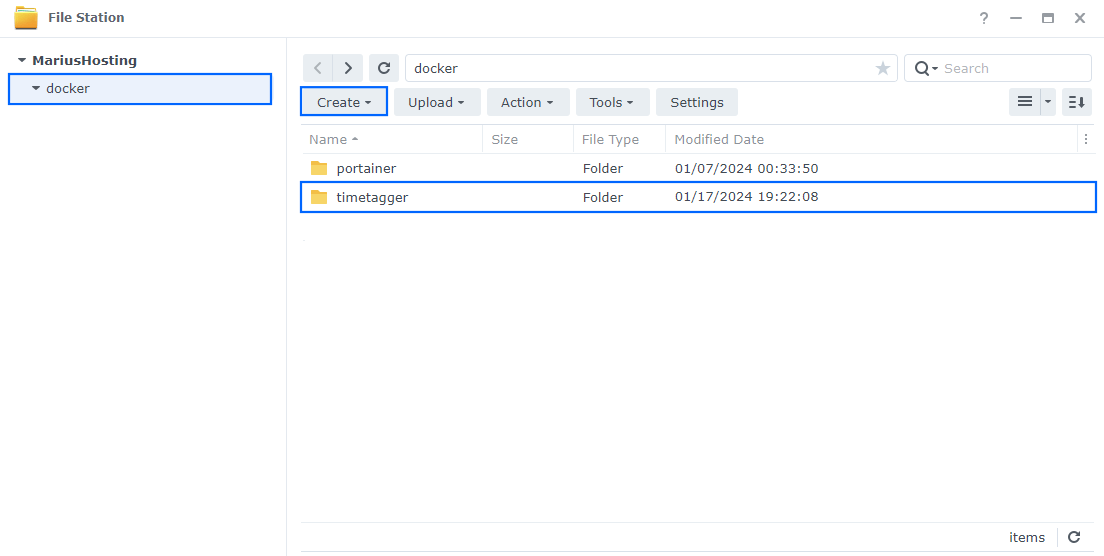
STEP 4
Launch your browser, then go to the TimeTagger Credential website by clicking on the blue link below.
Type in your own username and password in the apposite area. Copy the third code to clipboard. You will need this code later at STEP 6. Follow the instructions in the image below.
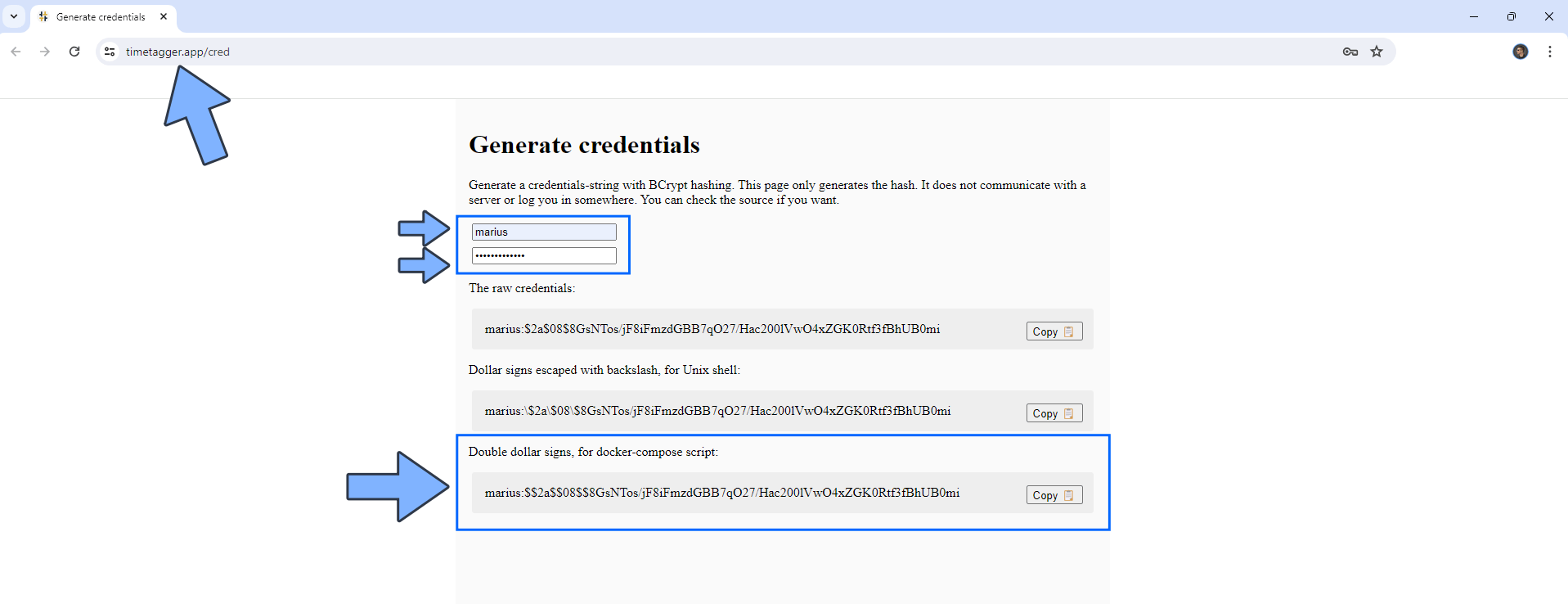
STEP 5
Log into Portainer using your username and password. On the left sidebar in Portainer, click on Home then Live connect. Follow the instructions in the image below.

On the left sidebar in Portainer, click on Stacks then + Add stack. Follow the instructions in the image below.

STEP 6
In the Name field type in timetagger. Follow the instructions in the image below.
services:
timetagger:
image: ghcr.io/almarklein/timetagger
container_name: TimeTagger
healthcheck:
test: timeout 10s bash -c ':> /dev/tcp/127.0.0.1/80' || exit 1
interval: 10s
timeout: 5s
retries: 3
start_period: 90s
ports:
- 6654:80
volumes:
- /volume1/docker/timetagger:/root/_timetagger:rw
environment:
TIMETAGGER_BIND: 0.0.0.0:80
TIMETAGGER_DATADIR: /root/_timetagger
TIMETAGGER_LOG_LEVEL: info
TIMETAGGER_CREDENTIALS: marius:$$2a$$08$$PHnD0ejnpTOFqFZRZkP9a.Urj.hagPi9jgj.juueSPqC2VVJtCzfG
Note: Before you paste the code above in the Web editor area below, change the value for TIMETAGGER_CREDENTIALS and type in your own code that you have previously created at STEP 4.

STEP 7
Scroll down on the page until you see a button named Deploy the stack. Click on it. Follow the instructions in the image below. The installation process can take up to a few minutes. It will depend on your Internet speed connection.

STEP 8
If everything goes right, you will see the following message at the top right of your screen: “Success Stack successfully deployed“.

STEP 9
🟢Please Support My work by Making a Donation. Almost 99,9% of the people that install something using my guides forget to support my work, or just ignore STEP 1. I’ve been very honest about this aspect of my work since the beginning: I don’t run any ADS, I don’t require subscriptions, paid or otherwise, I don’t collect IPs, emails, and I don’t have any referral links from Amazon or other merchants. I also don’t have any POP-UPs or COOKIES. I have repeatedly been told over the years how much I have contributed to the community. It’s something I love doing and have been honest about my passion since the beginning. But I also Need The Community to Support me Back to be able to continue doing this work.
STEP 10
The installation process can take up to a few minutes or less, seconds. It will depend on your Internet speed connection. Now open your browser and type in http://Synology-ip-address:6654 If everything goes right, you will see the TimeTagger page. Click App. Follow the instructions in the image below.

STEP 11
Click Login. Follow the instructions in the image below.
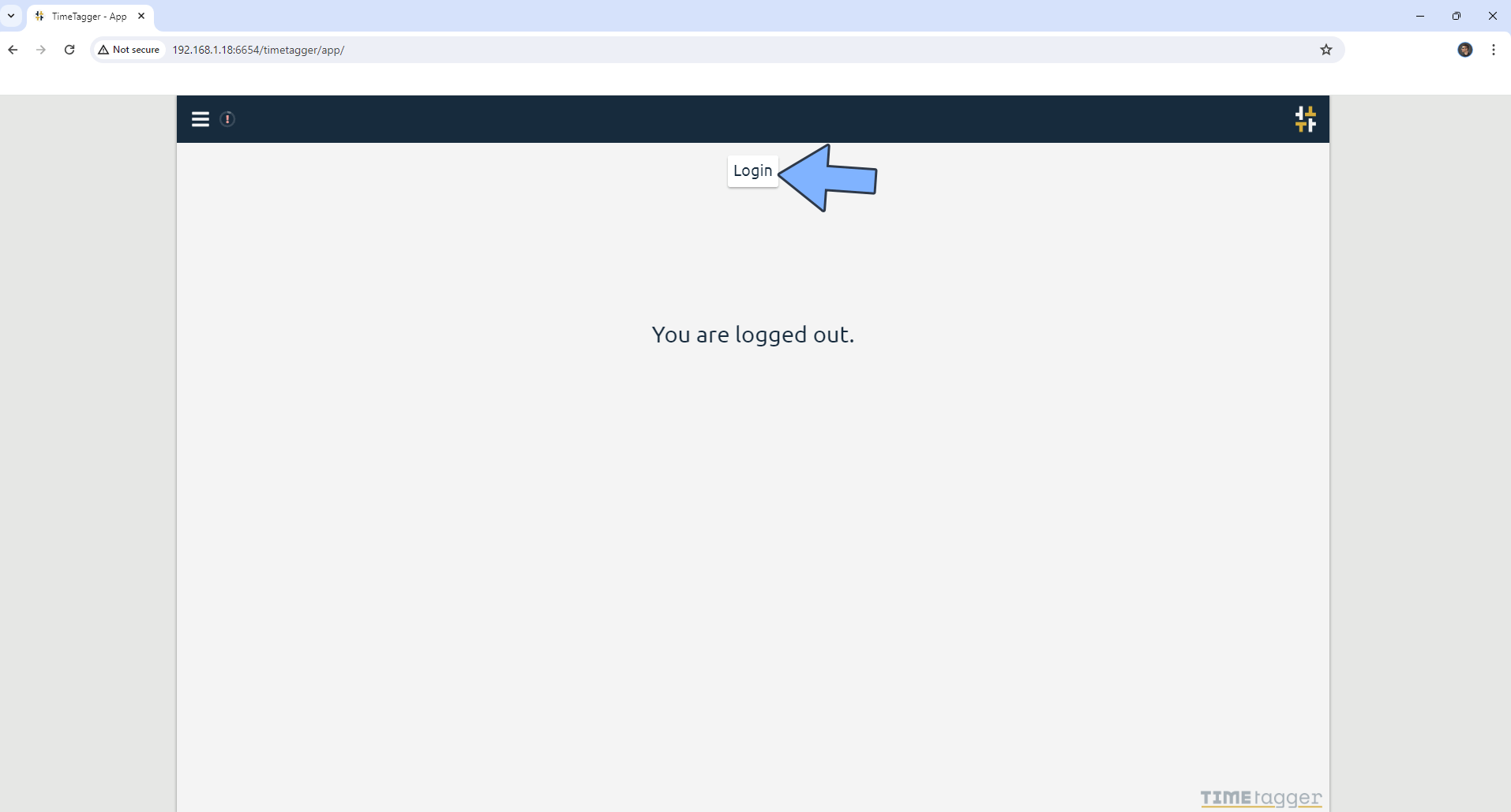
STEP 12
Type in your own username and password that you have previously added at STEP 4. Click Submit. Follow the instructions in the image below.
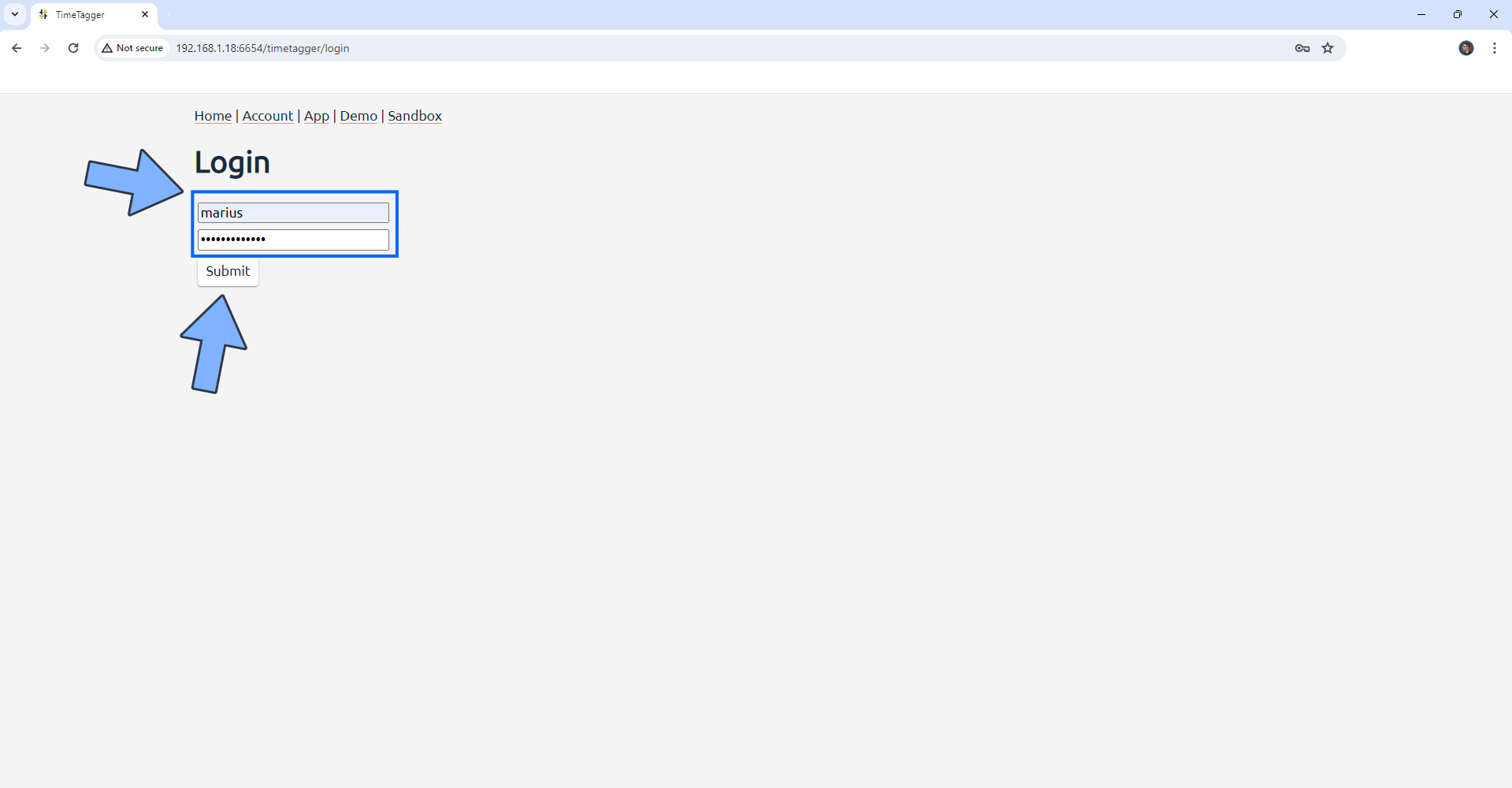
STEP 13
At the top left of the page, click the 3 horizontal lines then Settings. Follow the instructions in the image below.
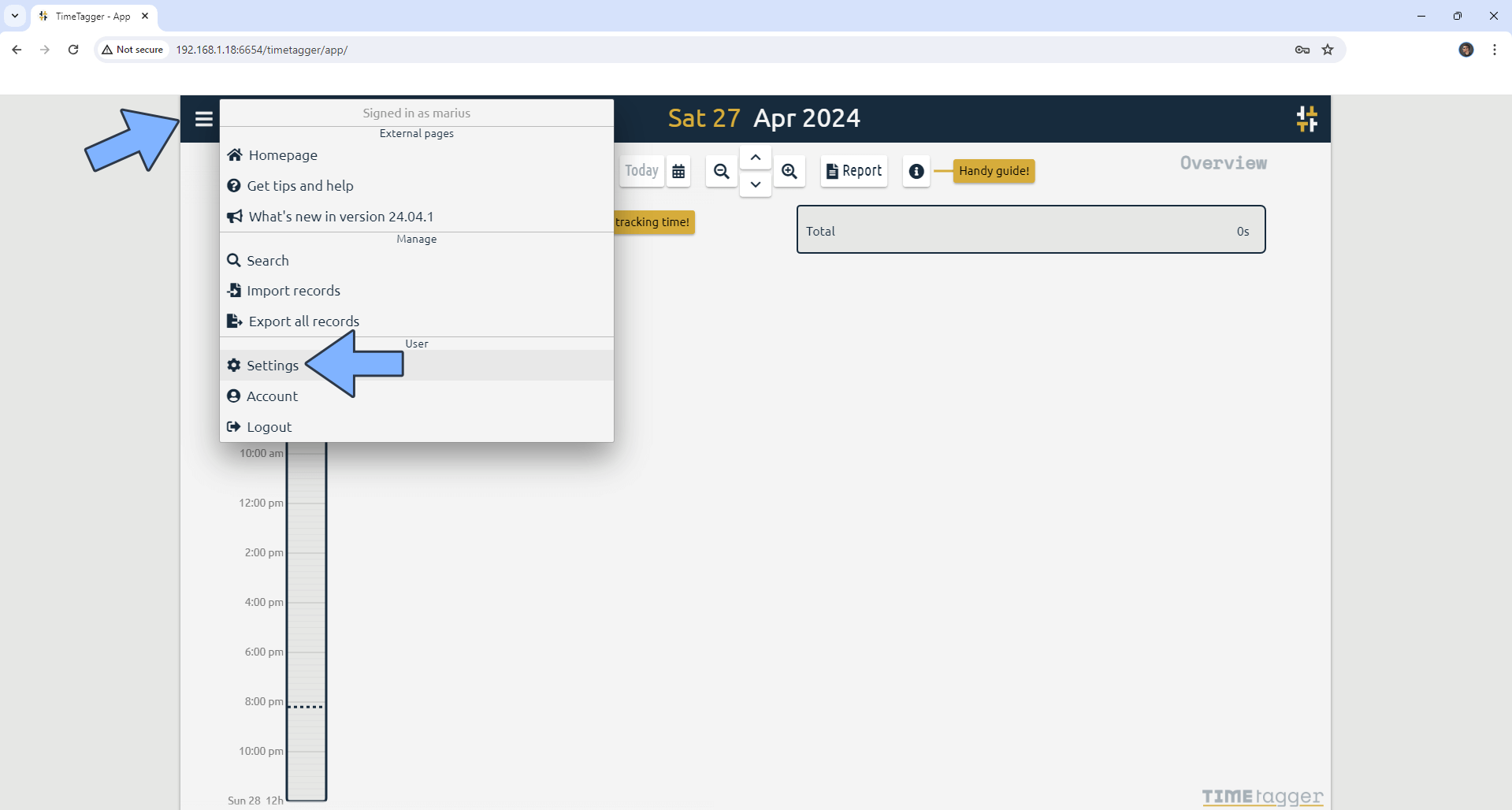
STEP 14
Choose your favorite settings. Follow the instructions in the image below.
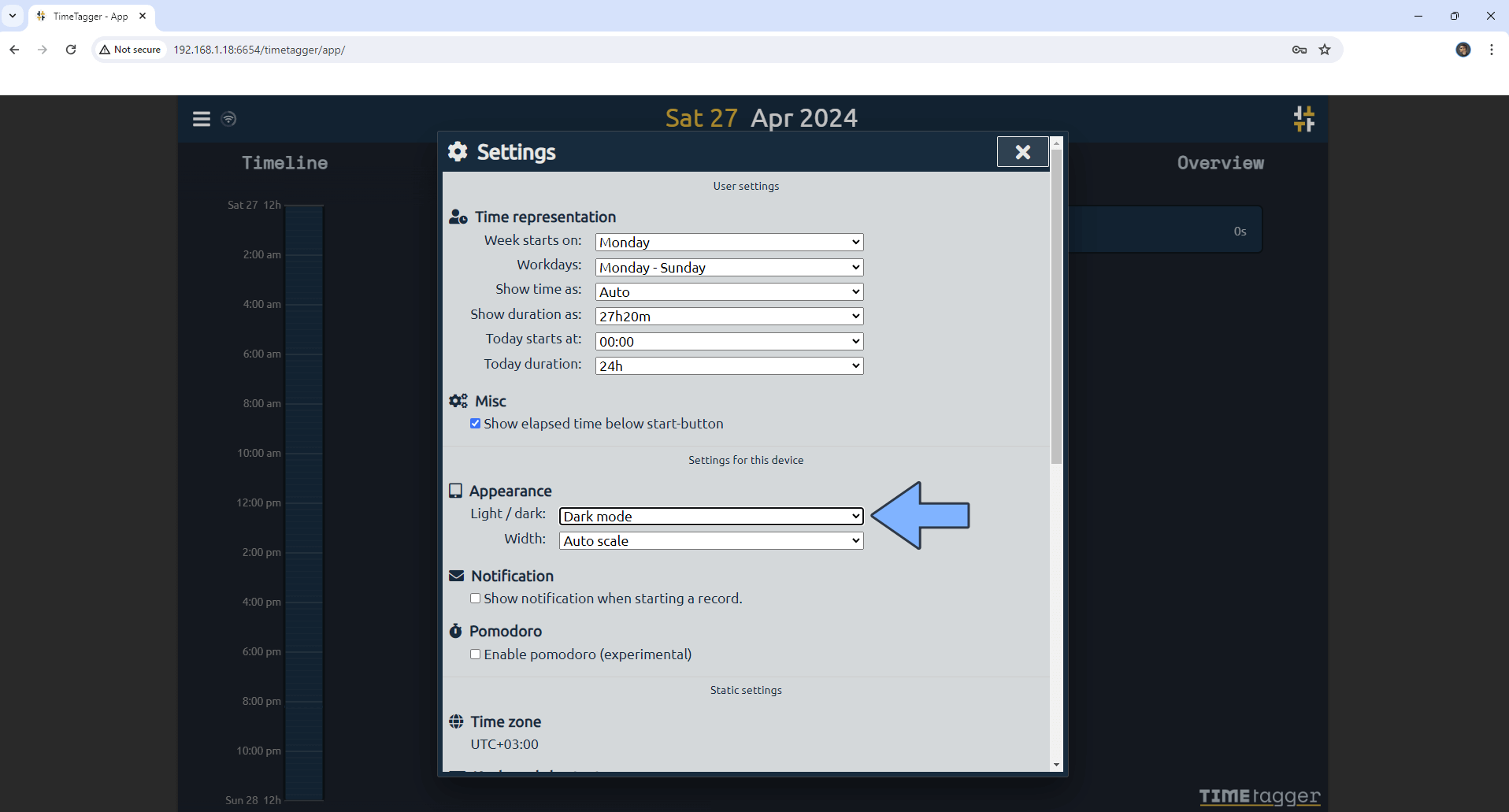
STEP 15
Your TimeTagger dashboard at a glance!

Enjoy TimeTagger!
If you encounter issues by using this container, make sure to check out the Common Docker issues article.
Note: If you want to run the TimeTagger container over HTTPS, check How to Run Docker Containers Over HTTPS. In order to make TimeTagger work via HTTPS, it’s mandatory to activate WebSocket.
Note: Can I run Docker on my Synology NAS? See the supported models.
Note: How to Back Up Docker Containers on your Synology NAS.
Note: Find out how to update the TimeTagger container with the latest image.
Note: How to Free Disk Space on Your NAS if You Run Docker.
Note: How to Schedule Start & Stop For Docker Containers.
Note: How to Activate Email Notifications.
Note: How to Add Access Control Profile on Your NAS.
Note: How to Change Docker Containers Restart Policy.
Note: How to Use Docker Containers With VPN.
Note: Convert Docker Run Into Docker Compose.
Note: How to Clean Docker.
Note: How to Clean Docker Automatically.
Note: Best Practices When Using Docker and DDNS.
Note: Some Docker Containers Need WebSocket.
Note: Find out the Best NAS Models For Docker.
Note: Activate Gmail SMTP For Docker Containers.
This post was updated on Wednesday / December 31st, 2025 at 3:21 PM
